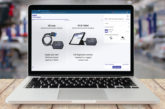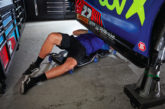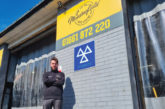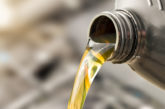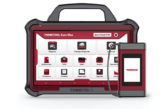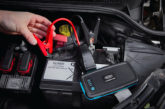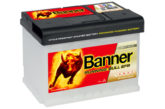German company, Herth+Buss, runs through the dangers posed to vehicles by the UK’s harsh winter conditions, and considers the essential checks that technicians should undertake in order to provide the best service to customers.
The aim of any winter check is to increase driver safety and to ensure that the vehicle is well protected against the cold, rain,frost, and other seasonal elements. Below is a handy list of the key checks that technicians should carry out when a vehicle rolls into the workshop for a winter service, as well as details of just some of the components available from Herth+Buss, which can help give added peace of mind.
The right tyres
The first step should always be to check the tyres. Is the tread depth sufficient and are they free of damage? These factors are key in ensuring that the vehicle does not skid under braking or start to aquaplane dangerously if the driver encounters black ice, rain or slush on the roads. Like in most European countries, a minimum tread depth of 1.6mm is prescribed in the UK. However, this should be considered the bare minimum.
The tyre pressure also plays an important role. Ever since November 2014, a tyre pressure monitoring system has been required on all new cars for safety reasons. In this system, sensors check the tyre pressure and notify the driver if the pressure drops. Faulty sensors can easily be replaced – for example with the universal Herth+Buss wheel sensors. A corresponding programming/diagnostic device is also available from the company.
Lighting
The lighting fixtures on the vehicle obviously play an essential role in winter. Darkness, rain, snow and fog all reduce visibility, as do mud and dirt thrown up from the road. Headlights can lose up to 60% of their luminosity after just half an hour of driving on dirty roads. In addition to ensuring that all lights are fully functional, you also need to check that the headlights have been correctly adjusted. If they have been set too high or too low, oncoming drivers will be dazzled.
If a light on one side of the vehicle is faulty, it is always recommended to replace the light on the other side too, so as to stop that light failing as well. This is because the two lights usually have a similar service life. In contrast, moisture on the inside of headlights does not pose a problem. It manifests itself as a thin layer inside the lens. It is produced when cold outside air meets the heat produced by the headlights, and generally disappears when the headlights are switched on.
However, if there is a relatively large quantity of water inside the headlights, it is recommended to replace them. In many European countries, it is now also compulsory to switch on the headlights during the day. Special daytime running lights are ideally suited to this task. They are used in addition to the headlights, but are weaker, use less power and last longer. The Elparts range from Herth+Buss includes suitable daytime running light sets for retrofitting.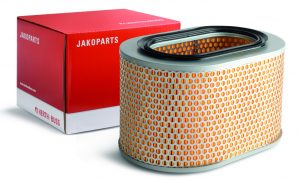
Windscreen and rear window
When it comes to ensuring that drivers have a clear view, the windows are just as important as the lights. As any drives can attest to, if the windows are iced up, it is easier to clear the ice from a clean windscreen or rear window than a dirty one. To ensure drivers have a clear view even when the temperature drops below freezing, the windscreen washer system also needs to be filled with a suitable antifreeze agent. So- called nano-seals can also be used to help rainwater run off the vehicle. If your customers keep a sharp ice scraper in their glove box, please note that it will damage the glass. Recommend to your customer that they use a plastic scraper which is kinder to the glass!
Body and suspension
Road salt is used by city and municipal authorities to stop ice forming on roads. According to new findings, it is less harmful to modern paints than was generally assumed to be the case. Salt only becomes a problem if it rubs against the vehicle and causes scratches, which then allow the ingress of moisture. Customers should be informed about such paintwork damage as there is a risk that rust will form here, and treating rust can be expensive. Another important way of stopping rust forming is to clear leaves from corners and nooks/crannies to ensure that water can drain away correctly and exhaust- air ducts are clear. You should also check, clean and, if necessary, seal the underbody.
Suspension parts such as the axles, joints and hinges are at much greater risk of suffering from rust. Unlike the sheet metal for the body, these components are not galvanised and are therefore particularly susceptible to rust. Rust can be prevented using greases and penetrating oils from spray cans. However, this protection needs to be reapplied regularly as it is rinsed off by water over time as the vehicle is being driven.
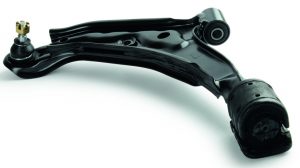 Battery
Battery
The battery is by far the most common cause of breakdowns in winter. It is placed under high loads as the heating and lighting systems on the vehicle are constantly in use. Modern maintenance-free batteries generally no longer require a great deal of time and attention. However, you should ensure that they are not discharged completely as this usually means they fail.
When removing batteries, always remove the negative cable first and then the positive cable (follow the reverse order when installing batteries). To charge batteries using a charger, the correct voltage first needs to be set on the device. If the batteries are not maintenance-free, the technician needs to cast their well-trained eyes over the ‘magic eye’, which indicates the battery’s state of charge and acid level. Fluid may, of course, need to be topped up and the battery charged.
A battery tester such as the ‘CrankPrint’ from Herth+Buss is recommended for this. Not only does it provide reliable information about the available battery capacity, it also allows all data to be printed out for precise analysis. Additionally, you could recommend a jumper cable to your customers if they do not have one yet. Powerful assisted start devices and chargers should form part of the basic equipment in any workshop, particularly in the cold winter months. These items are also available from the Elparts range.
Radiator
Here, it is important to ensure that the coolant contains enough antifreeze agent. If the engine’s water circuit freezes, it can cause expensive damage. The best way to check whether there is enough antifreeze agent is to use a cooling spindle. Please note that not every antifreeze agent is suitable for use in every radiator. Therefore, always carefully read the respective manufacturer specifications before using the product.
Air filter
In winter, the interior air filter is in heavy demand as the windows frequently fog up. If the filter is clogged, less air will flow through the filter and the windows will fog up faster. Therefore clean and, if necessary, replace the filter.
Brakes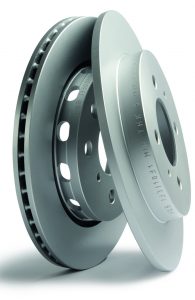
When the roads are wet and slippery, drivers need to be able to rely fully on their brakes. As such, it is crucial to test them to ensure they are working properly. You should set great store in using high-quality products because the brakes – as a safety-critical component – leave no room for errors, particularly in winter.
Herth+Buss has therefore focused on ensuring the highest possible quality in its Jakoparts range, which is evidenced by the ECE-R90 certification. Coated brake discs from Herth+Buss also effectively prevent corrosion, increase the service life of the brake disc and enhance the look of your vehicle. It is crucial to regularly check and, if necessary, clean all components in the brake system, particularly in winter. From the brake cable to the pads, pay careful attention here to ensure everything is in perfect condition.
Control system and shock absorption
The aspects to bear in mind for the brakes apply in equal measure to the control and shock absorption systems. After all, the roads themselves are also affected by the weather. Minor damage may become worse in winter due to the higher loads, causing a domino effect. If the shock absorbers are affected, the handling will be significantly impaired. Rubber parts designed to mitigate the friction from metal parts become brittle due to the moisture, and therefore fail. As such, it is important to take action promptly if required, by replacing damaged or faulty parts. When doing so, only use parts of OE quality or a comparable quality level.
Diesel fuel filter
Owners of diesel vehicles need to take particular care in winter because the fuel gels at low temperatures and clogs the fuel filter. In the worst-case scenario, the engine stops receiving fuel and stops working. In the winter months, this is why petrol stations offer winter diesel, which is less susceptible to this problem. If winter diesel is not available or a significant drop in temperature is imminent, additives can offer additional peace of mind. They are added to the tank and ensure that the diesel remains in a fluid state down to temperatures of –31°C.
Ensuring total customer satisfaction
As a specialist, the most important advice that you can offer your customers in winter is to ensure their vehicles are regularly maintained. If you look after your vehicle all year round, there will be no nasty surprises come the winter months and you will ultimately save money. Similar advice applies to spare parts: If something needs to be replaced, Herth+Buss strongly recommends opting for a part manufactured to OE or a comparable quality level. Although it might cost a little more, this investment will pay off and the benefits will be clear to see when it comes to performance, durability and maintenance. In addition to the OE quality, at Herth+Buss you can also rely on a three-year warranty.



